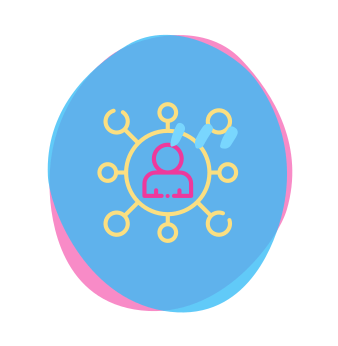


INCLUSION – HOLISTIC THINKING-
A classic feature in inclusion or the so-called “integration” work: You organize something, but nobody shows up, very few people show up or not the so-called “right people” show up. We have a few ideas on how to approach that.
WHY THIS TOOL?
There has been a great deal of debate as to why inclusion – or the so-called “integration activities” so often come to nothing. In our opinion, what happens in practice is that in many cases two things are approached separately from each other: the recruitment of volunteers and the recruitment of participants for activities. In this way, the volunteers are often just natives/ locals, whereas the recruitment of participants largely focuses on newcomers/ newly arrived persons. This not only leads to the reinforcement of roles that are detrimental to inclusion, but also means that activities end up with poor participation. In our experience, this realization has already been made at several places; however, there is a lack of ideas on how to do things differently. We would like to remedy this situation right here.
IDEAS
01.
Invite newly arrived persons to join the team, preferably as paid associates – provided that you have the resources for this – even if these are only temporary mini-jobs. These people will have perspectives you simply don’t have and so: ideas that you haven’t been able to come up with. And they will be able to reach other people that you would otherwise never be able to contact. Not to be underestimated: The learning and transformation process you’re going to go through and the signal that you send to other newcomers in this way.
02.
Declare locals to be your – perhaps most important? – target group. It may sound counter-intuitive, but the broader your local network is, the more sustainably successful your inclusion work will be. Volunteers always provide a multiplicative effect. Furthermore, locals are themselves not necessarily part of what is supposed to be a structural plan on building up inclusive spaces – and an inclusive society nor can they be able like that, to contribute towards inclusion per se.
03.
Introduce new roles in addition to “volunteer service”: Some people are driven away by the word “office”. For example, you can also attract “experts” or “ambassadors”, ideally from the target groups you wish to work with. This will noticeably improve your work.
04.
In many cases, inclusion – or the so-called “integration” focuses on deficits, for example on lacking language skills. Looking at the talents, passions and skills of the people that you work with, opens up brand-new opportunities for designing the inclusion process. Your “ambassadors” (see above) can assist you with finding talent. Of course, a personal conversation can also be very helpful.
05.
Identify “construction sites” in your vicinity that affect everyone. This could be a broken playground or an unused grassy area. Make a project from it. The joint experience of self-efficacy is highly community-building and contributes – almost as a side effect – towards a number of other inclusion objectives.